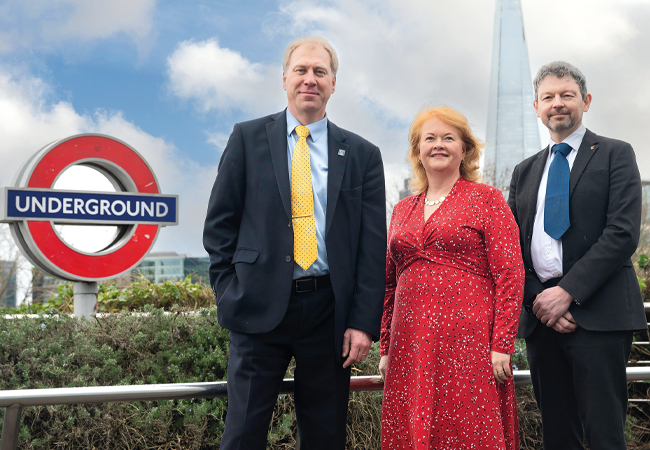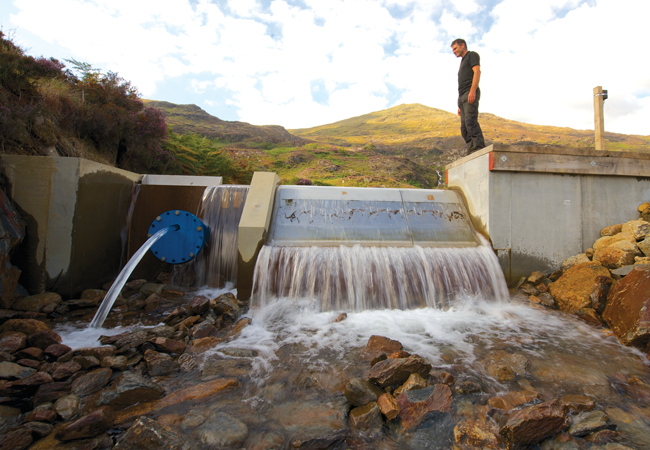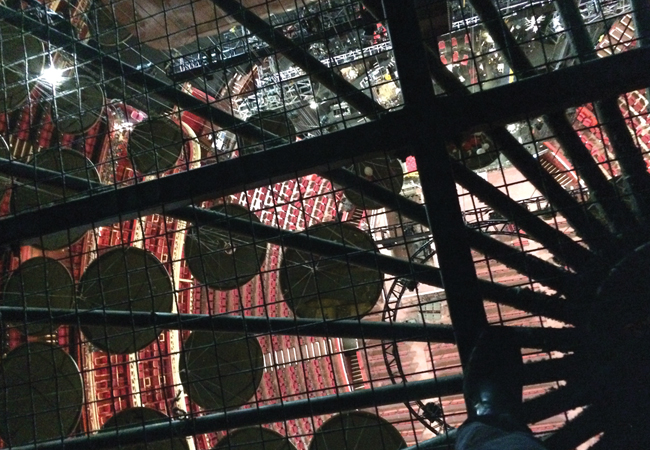
The oculus in the ceiling of the Albert Hall was part of the 1870s’ ventilation shaft through which hot air from crowds was exhausted
We must investigate the past to inspire the future. This was the overarching message from the Heritage Group symposium, titled ‘Historic building services in education, practice and research’.
The event, organised with the Kent School of Architecture at CIBSE’s Balham HQ in July, highlighted that many involved in building services pay little attention to the history of their industry. They sweep away engineering past to replace it with modern technology because they do not recognise the significance of what has gone before.
Past environmental solutions can offer important insight into the design of sustainable architecture today, as well as help engineers deal with problems of conservation, said Henrik Schoenefeldt, senior lecturer in sustainable architecture at the University of Kent, who led the event.
He said engineers need to engage in research, or establish partnerships with universities and professional bodies, to ensure the industry learns the lessons of the past.
Palace of Westminster
In the opening session, Schoenefeldt gave a presentation on the Palace of Westminster, where he is leading a large, Arts and Humanities Research Council-funded project investigating the historic ventilation system at the Houses of Parliament. ‘Between heritage and sustainability – restoring the Palace of Westminster’s 19th century ventilation system’ feeds into the building’s restoration and renewal programme. The project is helping to bridge the gap between academia and practice by investigating how historic knowledge can be applied to enable the re-use of historic infrastructure.
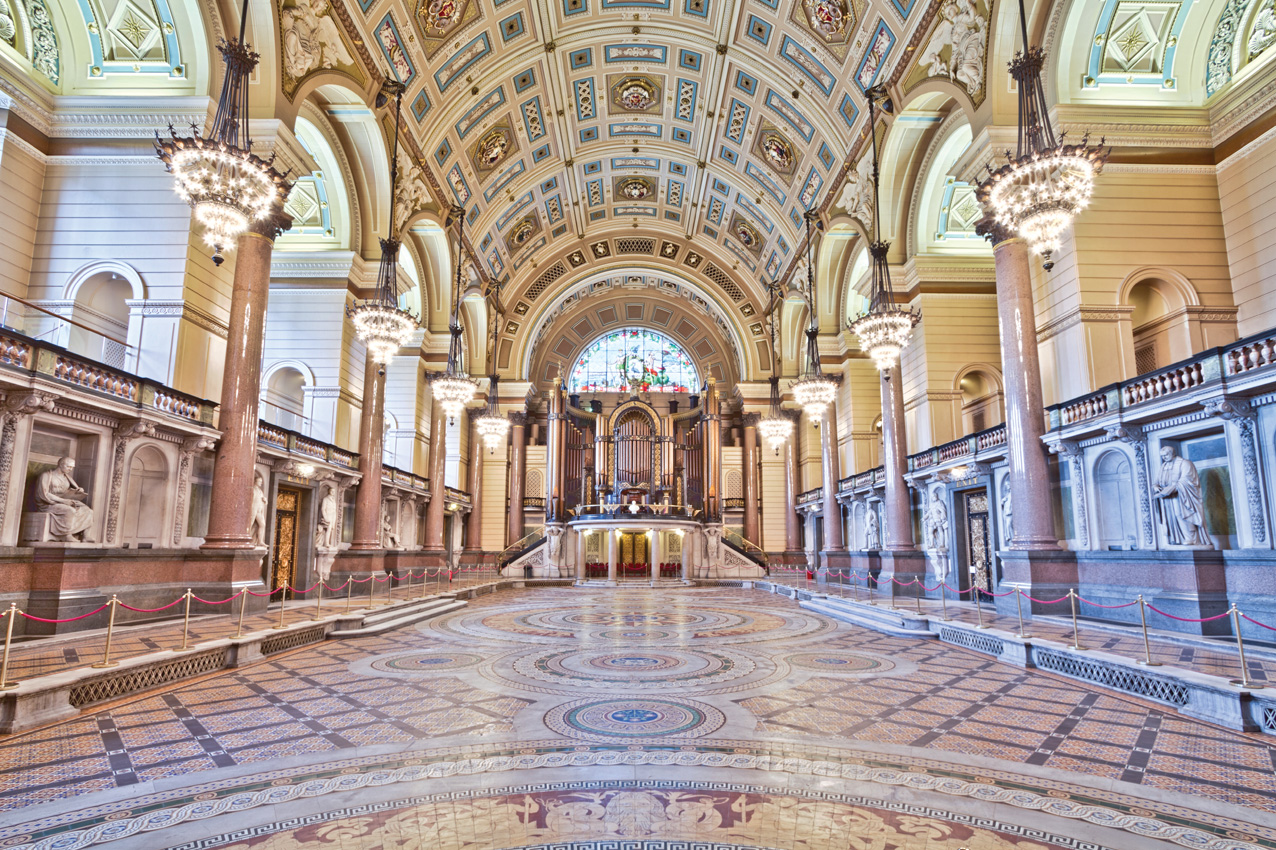
A natural ventilation system was used at St George’s Hall, in Liverpool. Credit: Flickr / Michael D Beckwith
The process involves undertaking a critical reconstruction, through archival research and in-depth site investigations, to understand the original system, how much of it survived, and where it came from.
‘Very often, you cannot understand how the form came into being unless you understand the process that lay behind its design development,’ said Schoenefeldt. ‘At the Palace of Westminster, the design process was politically charged, so a lot of the decisions cannot be explained on practical grounds but, often, only on political grounds.’
The next stage is understanding how the building performed and how it was operated – including its post-occupancy history – before drawing conclusions about how the system could be partially reused.
Schoenefeldt believes post-occupancy is critical because the way systems were used was often different from the way they were initially proposed. ‘The Palace of Westminster developed over 30 years, and the process started before the building services were even considered. The architectural decisions at the beginning were not shaped by later ideas of stack ventilation.’
The palace was originally designed to be served by one system and, because of political tensions, it was divided into sections to house multiple systems, which were distinct from one other, he said. ‘Those divisions cannot be understood purely on technical grounds; they’re based on decisions that are part of the political dimension of design, and the way the design has evolved.’
One of the aims of the project is to produce a 3D point-cloud survey and BIM model of the historic system that can, ultimately, be used by designers working on the restoration programme.
The survey says
To capture what today’s engineers think about the history of building services and its role in education and practice, Schoenefeldt conducted a survey leading up to the symposium. Of 29 respondents, 23 said they felt there was not enough knowledge of historic building services among industry practitioners. The majority said their knowledge was not gained through formal education, but through practice or personal interest.
Those who didn’t have knowledge of historic services said they relied on external advisers – including Historic England, facilities managers and heritage architects – for guidance on how to approach conservation.
A generational knowledge gap was also perceived; millennials were seen to be less familiar with historic buildings than those aged over 40. Schoenefeldt – a millennial himself – said: ‘This suggests young engineers should be experiencing education that reconnects them to that knowledge.’
He added: ‘It was seen that current practice doesn’t promote a need for learning about historic building services, which prevents people from creating bespoke contextual solutions.’
Most believed current practice doesn’t promote learning about historic building services, which prevents people from creating bespoke contextual solutions. Respondents said historic services general knowledge should be included in the formal education of engineers, and those who want to know more should pursue the MSc or PhD routes. A career option of becoming a specialist was highlighted as a prospect.
Schoenefeldt said: ‘Education should also be used as a vehicle to establish new working practices, including incorporating more research.’
Closing the gap
The Palace of Westminster research project has started to build the bridge between academic interest and the practical benefit that work could offer practitioners, said Schoenefeldt.
Handing over a research publication is not enough, however. ‘You need to produce a series of documents that translate into something of use to the practitioner,’ he added.
For the restoration programme, Schoenefeldt produced a series of reports, and was involved in the design brief to ensure knowledge of the past could be fed into practice.

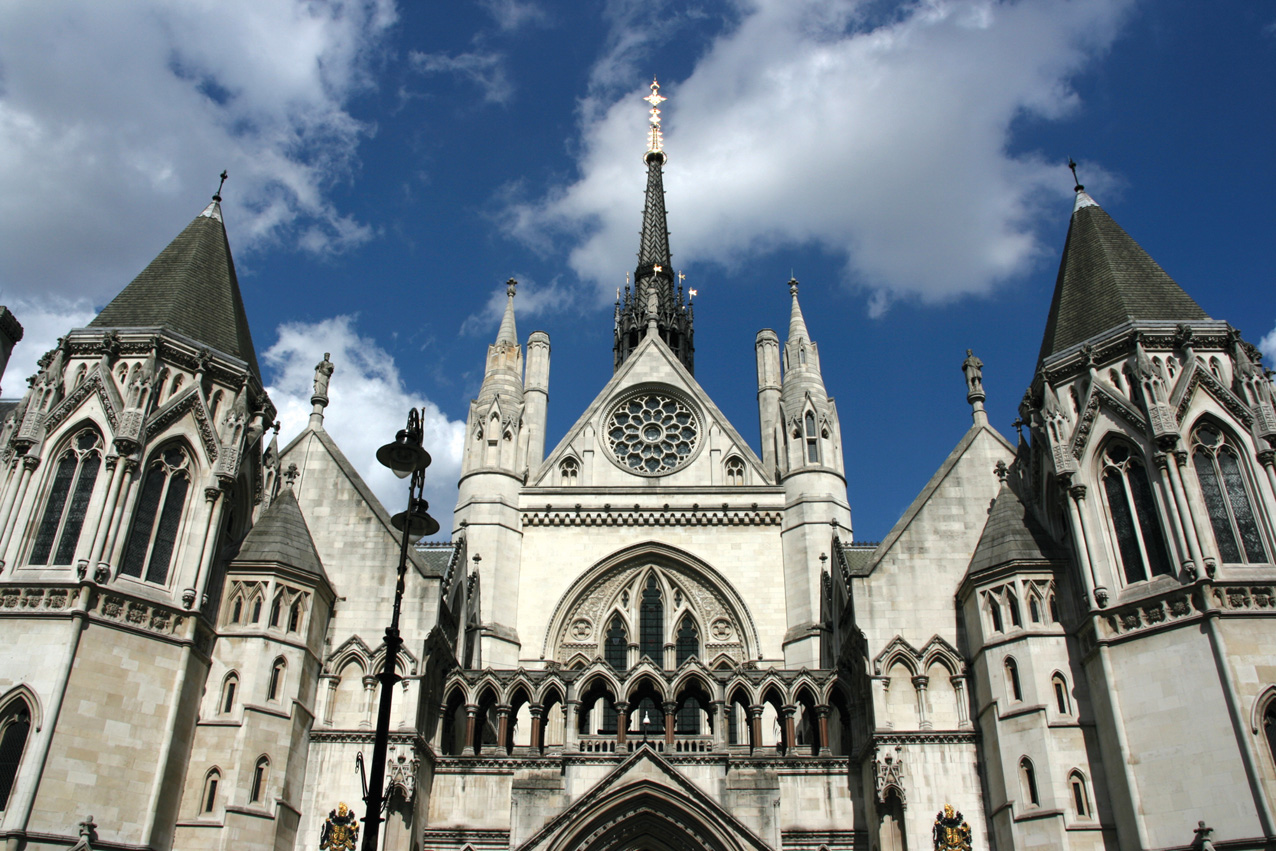
We must learn from historic principles applied at the Palace of Westminster (above) and the Royal Courts of Justice. Credits: iStock.com / Xavierarnau / Tupungato
This ‘knowledge’ must then be translated into a form that’s intelligible and meaningful to practitioners, before it can be disseminated among stakeholders. ‘Then, you have to facilitate knowledge utilisation because, sometimes, the researchers will be the ones to see the opportunities and will work with practitioners to uncover them,’ said Schoenefeldt.
He added that the outcome will ‘close the feedback loop’ by being fed back into academic research, because – in its own way – what is done in practice becomes research that feeds into academia.
A centre of excellence
The feedback loop is missing from our industry, Phil Jones, energy consultant and chair of the CIBSE CPD and district heating group, told the audience during the plenary discussion. ‘That’s why we are stuck in a cycle of getting things wrong again and again,’ he said. ‘We need to learn from the past and use that knowledge in buildings today.’
To get out of such a cycle, Jones said textbooks were needed that present case studies and draw out key design principles. He also proposed creating a standard module – with an hour each on the history of boilers, fans, air handling, and so on – to be taught within the curriculum of every building services course.
‘Lawyers, doctors, the military – even architects – learn from case history. Building services engineers don’t, and we’ve got to fix that through teaching and research,’ he said.
Jones proposed that two or three universities should come together and – with industry funding – set up a centre of excellence for the building services discipline.
‘We shape our buildings and, afterwards, they shape us – we have to recognise the heritage,’ he said.
Edith Blennerhassett, director at Arup, suggested the industry could sponsor a student prize for an essay in relation to the history of building services.
The evolution of the Heritage Group
The institution’s oldest special interest group, the CIBSE Heritage Group was founded in 1973 with the main purpose of discovering and recording aspects of building services history, including systems and equipment, companies and pioneering engineers.
In 1897, the Institution’s terms of reference stated that it should ‘make the building services industry aware of the need to record historically significant installations before they become extinct’.
The following year, the Archeology of Building Services Working Party was formed, with Ken Dale as chair. Neville Billington, another chair, joined the group in 1977, and Brian Roberts became chair in 1984 and held the position for 27 years.
From 1987 to 1996, a series of Christmas lectures raised the profile of the group and, on the 100th anniversary of CIBSE’s predecessor, the Institution of Heating & Ventilating Engineers, Brian Roberts produced The quest for comfort.
Past chair Neil Sturrock said: ‘The Heritage Group is all about learning from the lessons of the past. We want the engineering students doing that; the Engineering Council insists that history is taught on all engineering courses.
‘These days, engineering is seen as a usable commodity – things are scrapped and started again. There’s no appreciation of how that development occurred, and people do not build on the successes of the past.’
‘A lot of interest for the topic is from enthusiasts, so if lecturers won’t squeeze it into their course, students might see it as a prize worth going after,’ she said.
Going back in time would allow students to get back in contact with the ‘first principles’ of environmental design and develop a critical angle on technology that could apply to modern systems, said Schoenefeldt. It would also show them how to reuse existing infrastructure to limit the impact of re-servicing historic buildings.
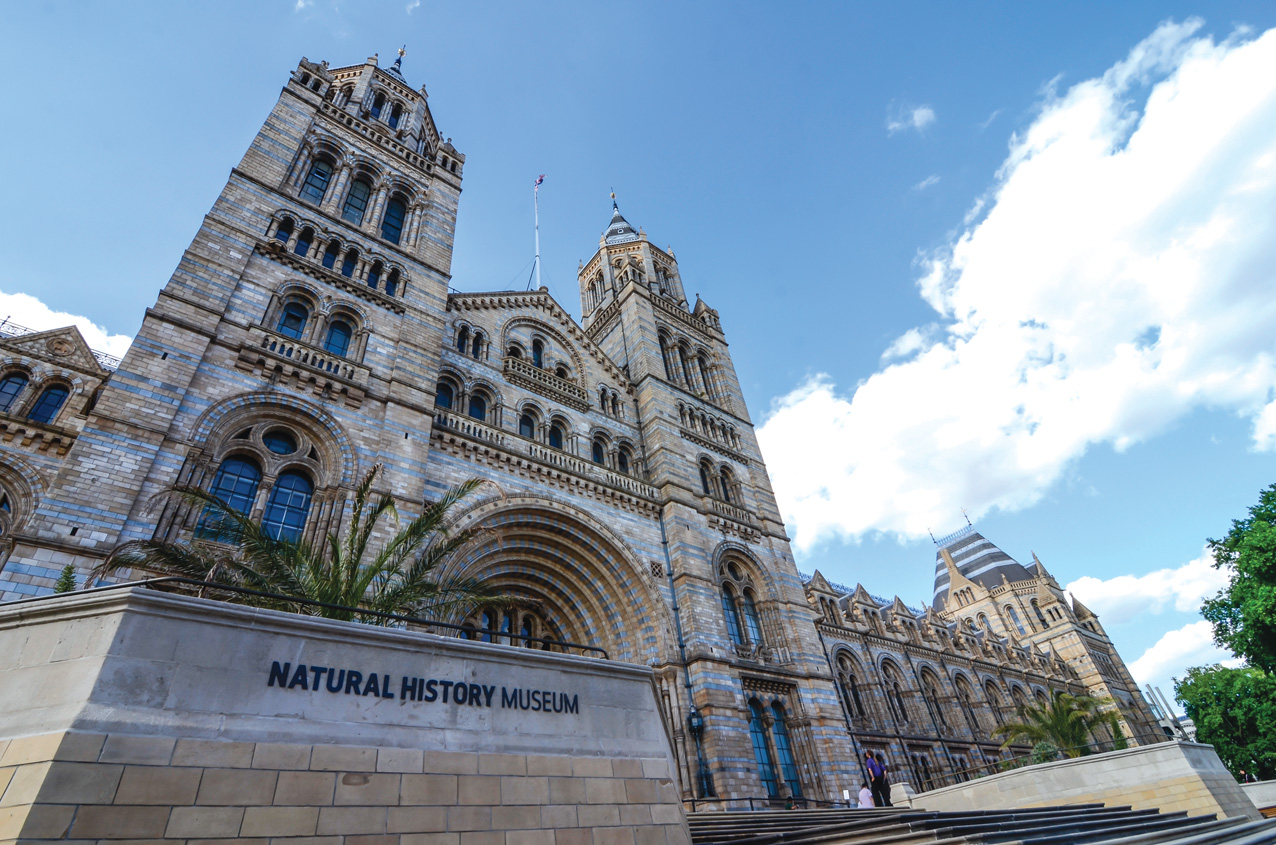
The Natural History Museum, London, originally used stack ventilation. Credit: iStock.com /William Barton
Only 1.5% of UK buildings are new – the rest are existing buildings, said Graeme DeBrincat, senior façade engineer at Arup. ‘If we use the circular economy principles of recycling and reusing them, that’s a step in right direction.’
He added that the industry needed to get away from the ‘take, use, dispose’ mentality. ‘But that takes bold decisions. Using modern digital tools, we can prove the success of traditional approaches to building design, but we have to be bold, and back it up with good communication and analyses.’
Schoenefeldt said today’s working methodology is not fit for purpose and we have to explore new ways of working using the knowledge of historic principles. ‘But building services engineers cannot do it on their own – they need to collaborate with all the other disciplines,’ he said.
‘My proposition is that the institution takes a more active lead in trying to promote the understanding of historic building services through engagement and research, through promoting new forms of practice, and through changes in education.’
Heritage in education
Students from the Kent School of Architecture showed how the study of historic building services has been integrated into their education.
- Studying the MSc course in architecture and sustainable environment – which has one module dedicated to historic building services – Surabhi Pandurangi explained the design interventions carried out at the British Museum reading room for preservation and comfort purposes. In the 19th century, the reading room was warmed using heating surfaces with hot water. From the boiler, a set of main water pipes ran along the basement air chamber, which acted like a plenum, and fresh air passed around the surfaces of hot-water pipes, arranged in a radiating pattern in the air chamber. The dome was made of two concentric air chambers – the outer layer assisted in equalising the temperature during extreme weather conditions, and the inner layer was used to extract stale air through an aperture on the soffit of the window. She said: ‘This is an example of a successful collaboration between the library, architect and engineer to produce a building that reflected the experimental enthusiasm for a variety of services, like warming and ventilating systems.’
- MSc student Samuel Leatt spoke about BIM in heritage projects. He focused on a 2012 refurbishment at Temperate House at Kew Gardens, where efforts were made to make the building more sustainable using historic services. Blocked opening lights and vents were repaired and reopened to maximise through ventilation to reduce internal temperatures. To promote stack ventilation, all lower-level vents were reinstated, and high-level windows became automated. A building information model had been created at Kew but, because technology had moved on so quickly, they couldn’t open it, said Leatt. ‘With quantum leaps in technology, will you be able to open the BIM model 10 or 15 years down the line?’ As information is digitised, archives might be discarded, which might be detrimental if the models can’t be opened in future, he said.
- MSc student Elisa Hahn discussed the adaptive reuse of buildings. She said retention of existing structures results in maximum embodied energy savings, and minimum operational savings. But demolishing a building and creating a new structure will have the opposite effect. ‘For an adaptive reuse project to be sustainable, there must be a balance between embodied and operational energy. ‘Certain types of refurbishment projects are favourable to sustainability, where the increase in energy is minimum and the increment of time is maximum,’ she said.
- PhD student Bahar Badiee presented her research on whether Persian Orsi windows were inspired by the little Ice Age – a period of cooling that lasted from the 13th to 19th century – and to investigate the design and function of the windows as climatic elements of Iranian architecture. Badiee said she compared historical research – including Western travellers’ manuscripts and old photographs – with other sources to ensure her findings were credible and to ‘create a consistent and reliable narrative’. She found the windows are a reflection of the historic building environment, but their large size and construction material were not inspired by climatic changes because they were unsuitable for the climate. She is investigating other reasons for their integration in Persia.
- PhD student Sam Johnson presented his research investigating different ways of managing fires to help in the conservation of objects, particularly wooden furniture, in historic houses. He studied a fireplace from the 1980s, using loggers to log humidity and temperature, as well as a thermal imaging camera to measure the thermal efficiency of fire, before modelling the data. He observed that walls were much warmer than the air because radiant heat warms objects, not the air, where humidity is higher.



